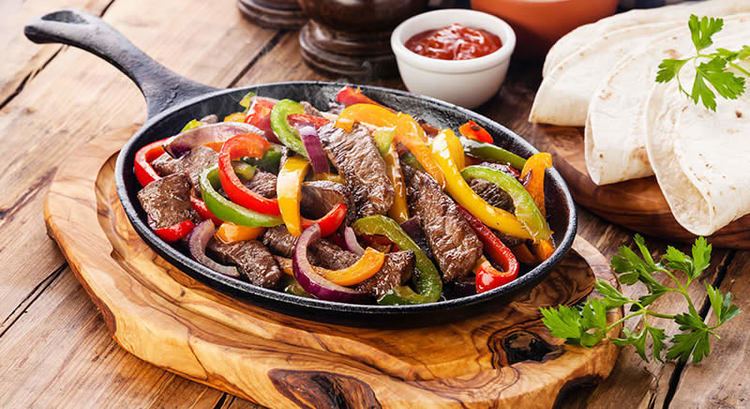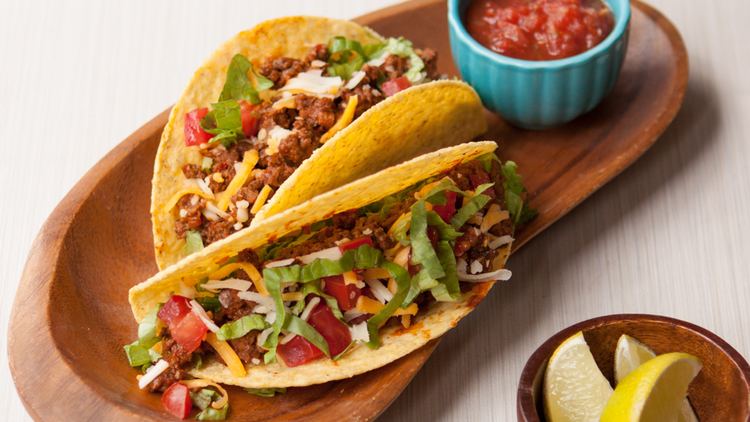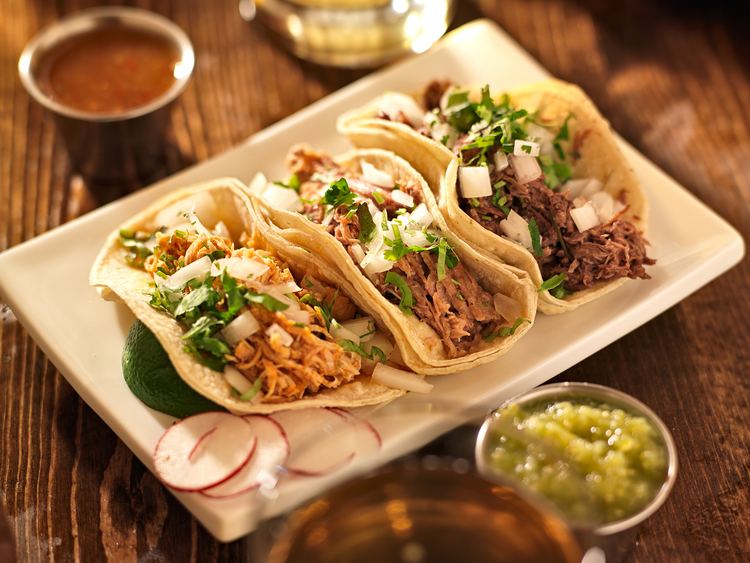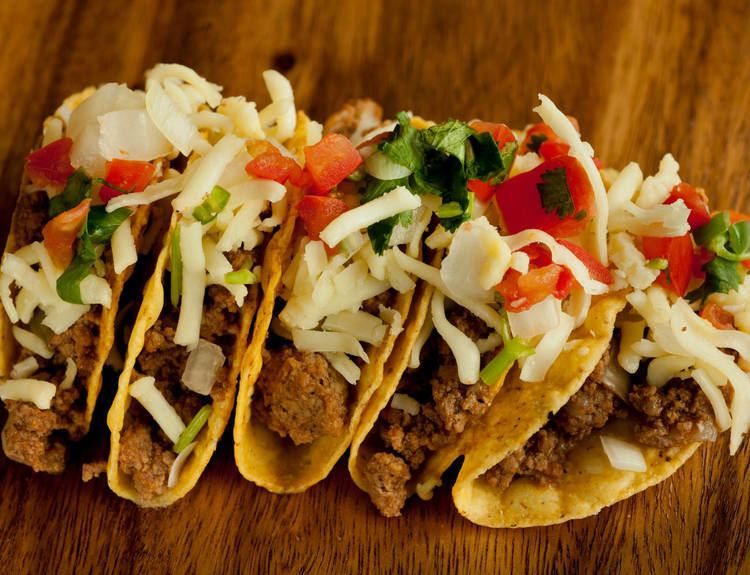 | ||
Similar Taco, Burrito, Fajita, Enchilada, Wheat tortilla | ||
Tex-Mex (from Texan and Mexican) is a term describing a fusion of United States cuisine and Mexican cuisines, deriving from the culinary creations of Tejanos. It has spread from border states such as Texas and others in the Southwestern United States to the rest of the country as well as Canada. Tex-Mex is most popular in the state of Texas.
Contents
Tex-Mex is often conflated with the Southwest cuisine found in Arizona, New Mexico, Colorado, and Utah, but it is different.

Common dishes

Some ingredients are common in Mexican cuisine, but other ingredients not typically used in Mexico are often added. Tex-Mex cuisine is characterized by its heavy use of shredded cheese, meat (particularly beef and pork), beans, and spices, in addition to flour tortillas. Dishes such as Texas-style chili con carne, burritos, nachos, hard tacos, fajitas and chimichangas are all Tex-Mex inventions. Moreover, Tex-Mex has imported flavors from other spicy cuisines, such as the use of cumin, introduced by Spanish immigrants to Texas from the Canary Islands and used in Berber cuisine, but used in only a few central Mexican recipes.
History

The word "Tex-Mex" first entered the English language as a nickname for the Texas Mexican Railway, chartered in southern Texas in 1875. In train schedules published in the newspapers of the 19th century the names of railroads were abbreviated. The Missouri Pacific was called the Mo. Pac. and the Texas-Mexican was abbreviated Tex. Mex. In the 1920s, the hyphenated form was used in American newspapers in reference to the railroad and to describe Texans of Mexican ancestry.

In the mission era, Spanish and Mexican cuisines were combined in Texas as in other parts of the northern frontier of New Spain. However, the cuisine that would come to be called Tex-Mex actually originated with Tejanos (Texans of Spanish descent) as a mix of native Mexican and Spanish foods when Texas was part of New Spain and later Mexico.
From the South Texas region between San Antonio, the Rio Grande Valley and El Paso, this cuisine has had little variation, and from earliest times has always been influenced by the cooking in the neighboring northern states of Mexico. The ranching culture of South Texas and Northern Mexico straddles both sides of the border. A taste for cabrito (kid goat), barbacoa de cabeza (barbecued beef heads), carne seca (dried beef), and other products of cattle culture is common on both sides of the Rio Grande. In the 20th century, Tex-Mex took on such Americanized elements as yellow cheese, as goods from the United States became cheap and readily available.
In much of Texas, the cooking styles on both sides of the U.S. - Mexico border were the same until a period after the U.S. Civil War. With the railroads, American ingredients and cooking appliances became common on the U.S. side.
A 1968 Los Angeles Times feature claimed "[i]f the dish is a combination of Old World cooking, hush-my-mouth Southern cuisine and Tex-Mex, it's from the Texas Hill Country."
Paris's first Tex-Mex restaurant opened in March 1983. After the 1986 release of the film Betty Blue, Tex-Mex cuisine's popularity in Paris increased.
Terminology
The Oxford English Dictionary supplies the first-known uses in print of "Tex-Mex" in reference to food, from a 1963 article in the New York Times Magazine, and a 1966 item in the Great Bend (Kansas) Tribune. Diana Kennedy, an influential food authority, explained the distinctions between Mexican cuisine and Americanized Mexican food in her 1972 book The Cuisines of Mexico. Robb Walsh of the Houston Press said the book "was a breakthrough cookbook, one that could have been written only by a non-Mexican. It unified Mexican cooking by transcending the nation's class divisions and treating the food of the poor with the same respect as the food of the upper classes." Another early instance in print appeared in the Mexico City News in 1973.
